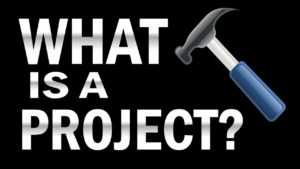How the Education System is Failing our Children: Student Requirments
Due to the unbalanced ratio between teacher and students, it is difficult if not unrealistic expectations placed on the teacher to provide the individual student the adequate needs to understand the basic three R’s; reading, writing, and arithmetic.
Due to the ever-changing environment, student today has much more information to acquire, digest, and understand in order to maintain the necessary skills in today’s work environment.
In our last episode, we reviewed teachers’ salaries, the wage gap, and where those funds come from in order to provide teachers with a means to live. We have also seen how 1 in 4 teachers are leaving the profession due to unrealistic expectations placed upon them, with little or no resources. This in and of itself is failing our children.
In this episode, I want to look at what is currently required for a student to acquire a high school diploma. Have we thrown out the basic reading, writing, and arithmetic as we have with cursive penmanship?
Let’s get started
Boston Latin School was founded in 1635 and is both the first public school and oldest existing school in the United States. The school was founded by the Town of Boston with a curriculum centered on the humanities. The establishment of this first school is due to the influence of Reverend John Cotton. The reverend wanted a similar school like the Free Grammar School of Boston, England, where Latin and Greek were taught. Unlike the former England school providing writing in Latin and Greek, America’s first public school focused on the ‘goods of the soul.’
This occurred before the Revolutionary War in 1775. As pilgrims and travelers came to America, each carved out a new World for them to start fresh.
The issue of course is each doing their own version dependent on the geography, cultural beliefs, and how had the larger purse influencing the education. Just as in the 17th century, money and power pushed for influence upon the youth, as it is today. As I tend to quote, ‘Nothing new under the Sun.’ The second issue is only a handful of the towns and communities were providing this free education. There were no standards or free education systems provided throughout the states.
It wasn’t till around 1837 in the state of Massachusetts did a state board of education was established. Upon this state board, Horace Mann advocated for a public education system to be provided free for the youth, throughout the state. With the established state board, they were given the task of collecting and publicizing school information throughout the state.
History tells us Horace Mann advocated for the free state public school education system because he saw that the industrializing world demanded different skills than its agricultural predecessor. He advocated outside the board of education, where he had little power, by using his voice to create a bi-weekly Common School Journal in 1838 for teachers. Through this, he provided pedagogy and stated the need for public school. with well-trained professional teachers.
His message was centered on six fundamental propositions.
(1) that a republic cannot long remain ignorant and free, hence the necessity of universal popular education;
(2) that such education must be paid for, controlled, and sustained by an interested public;
(3) that such education is best provided in schools embracing children of all religious, social, and ethnic backgrounds;
(4) that such education, while profoundly moral in character, must be free of sectarian religious influence
(5) that such education must be permeated throughout by the spirit, methods, and discipline of a free society, which precludes harsh pedagogy in the classroom; and
(6) that such education can be provided only by well-trained, professional teachers.
All sides fought him for these propositions. However, these propositions show the need to educate the youth to be educated in the need to advance society moving forward into the industrial age, and more importantly, in my opinion, equal access to all.
The Great Depression
My grandmother lived through the great depression. While I was in school, an assignment was given to us, where we would have to inquire about this historical event. As a kid, I had no idea and was able to ask someone that lived through this event. Years later, I wish I had made notes to keep from someone living in that time.
The great depression was a worldwide economic depression lasting ten years from 1929 to 1939, affecting the industrialized world. A stock market crash, wiped out millions of investors, causing panic This disaster due to its length, depth, and consequences caused industrial production to plummet, and unemployment soared across America. This caused President Franklin D. Roosevelt to create The New Deal, a series of programs and projects to give the masses work and a paycheck to survive.
The Great Depression also had a historical impact on the public education system. Beginning in 1932 the schools suffered budget cutbacks, reduction in school hours, increased class sizes, lower teacher salaries, and school closings. This caused many children to quit school to work on farms and factories. These oversized classes and underfunded issues caused 20,000 public schools to close.
Politically, the school system transformed. Teachers fought back with the reductions and increased determination. Memberships in organized teachers’ unions rose drastically. Educators radicalized the teachers to take charge in creating an entirely new social order calling for a redistribution of wealth for a fairer America. Educators began to push teaching courses upon the youth in labor organizing, political reform, civil rights, and reform in housing and healthcare.
This radicalism sparked concern in the Conservative groups, such as the American Legion, perceiving these activities as communism creeping into public schooling.
While the political battle was brewing, we can see some positive outcomes for the children. The school budgets from state funds did increase. The efficiency found its way into the school system, as smaller schools were merged into larger ones and curriculum standards came into effect. Interestingly, alternative teaching took hold, providing education in alternative environments for those students unsuccessful in the standard brick-and-mortar public classroom.
Why was the school created?
Today, if you inquire about the public school’s purpose you are typically given many answers, with a variety of reasons, dependent on culture, background, and needs.
Today the Federal Government has the U.S. Department of Education, which establishes policy for administrators and coordinates federal assistance to education.
Education remains primarily in the hands of the State and is locally responsible. It is the States and communities, as well as public and private organizations that establish the requirements for enrollment and graduation.
Requirements to Graduate
Typically the States require a minimum number of credits and taking the ACT and OSTP tests for High School graduation.
In Arkansas, you are required to have a minimum of 22 credits.
In Oklahoma, you are required to have a minimum of 23 credits.
The National Center for Education Statistics provides a State by State 2018 chart for minimum credit requirements.
The highest credit count is 24, for the States of Alabama, Delaware, District of Columbia, Florida, Hawaii, Mississippi, Missouri, New Jersey, New Mexico, Oregon, and West Virginia.
The lowest credit count is 13 for Wyoming, followed by 14 for Iowa.
While these total minimum credits may seem sparse, you also need to take into consideration how many credits between subjects to make these totals.
The total credits are divided into five subject categories; English, Math, Science, Arts, and Social Studies.
In Arkansas, 22 credits are required. Of the 22 credits, 18 must be comprised of academic credits.
English Language Arts – 4 credits
- English 9
- English 10
- English 11
- English 12
Mathematics – 4 credits
- Algebra I – 1 credit
- Geometry – 1 credit
- Algebra II – 1 credit*
- ADE Approved Mathematics or Computer Science Flex – 1 credit*
- Algebra II and math beyond Algebra II or Computer Science Flex Credit are required for Smart Core. Algebra II and/or fourth math may be replaced by another approved course if Smart Core is waived.
Science – 3 credits
- ADE approved biology – 1 credit
- ADE approved physical science – 1 credit
- ADE approved third science or Computer Science Flex – 1 credit
Social Studies – 3 credits
- US History – 1 credit
- World History – 1 credit
- Civics – ½ credit
- Economics and Personal Finance – ½ credit
Oral Communication – ½ credit
Physical Education – ½ credit
Health & Safety – ½ credit
Fine Arts – ½ credit
Career Focus or Additional Content – 6 credits
In Oklahoma 23 credits are required. Reference:
- Language Arts – 4 credits
- Mathematics – 3 credits
- Science 3 credits
- Social Studies 3 credits
- Arts – 1 credit
- Computer Education or World Language – 1 credit
- Meet requirements of personal financial literacy
- Encouraged for 2 credits of world language and 2 credits of physical and health education.
The states have the primary power and utilize the education system too:
- Develop a productive workforce.
- Create an informed citizenry
- Provide for social mobility.
These three goals are the main ones we see in today’s 21st century, as opposed to the original six propositions provided by Horace Mann.
You can find my Podcast on all the platforms above! Be sure to subscribe to Info By Matt Cole Podcast on your favorite platform!

References:
You can hear this article on my Info By Matt Cole podcast.





